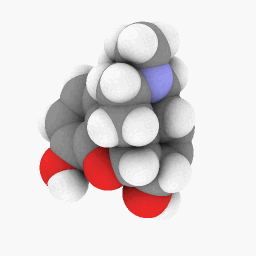_ بخش فرآیند شبیه سازی در (نانو ذرات الکتریکی)
بررسی و تحلیل تاثیر محدودیت کوانتومی (Quantum Confinement) در هدایت الکتریکی نانو ذرات (Nano particle) در سرعت فرآیند شبیه سازی نانو اَدوات
پژوهشگر و نویسنده: دکتر ( افشین رشید)

نکته : نانو مواد بر حسب ابعادی از آن ها که در مقیاس نانو قرار دارد، به چهار دسته نانو مواد صفر بعدی، یک بعدی، دو بعدی و نانو مواد حجیم سه بعدی تقسیم بندی می شوند که با روش های بالا به پایین یا پایین به بالا می توان آن ها را تولید کرد. نانو مواد به دلیل اندازه بسیار کوچک خود، خواص ویژه و بعضاً متفاوت با دیگر مواد معمولی در هدایت الکتریکی از خود نشان می دهند.
_utr.gif)
به طور کلی مواد دارای سه بعد طول، عرض و ارتفاع هستند. اگر حداقل یکی از این ابعاد در مقیاس فناوری نانو (100-1 نانو متر) باشد، به آن ماده نانو ساختار گفته می شود. مواد نانو ساختار بر حسب این که چند بعد در مقیاس فناوری نانو داشته باشند، تقسیم بندی های مختلفی می شوند. یکی از این تقسیم بندیها بر حسب تعداد ابعاد آزاد است. منظور از بعد آزاد، بعدی است که در مقیاس نانو نباشد و هر مقداری بتواند داشته باشد.ساختار های انرژی (تراز یا نوار) مواد در راستای هر کدام از ابعاد طول، عرض و ارتفاع وجود دارد. به عبارت دیگر هر جسم سه بعدی دارای سه ساختار انرژی مجزا در راستای سه بعد خود است که برآیند آن ها ساختار انرژی کل ماده را بیان می کند. ابعادی از مواد نانو ساختار که در مقیاس نانو هستند، اصطلاحاً محدودیت کوانتومی (Quantum Confinement) دارند. برای مثال لایه های نازک که در یک بعد دارای تراز های انرژی گسسته هستند. محدودیت کوانتومی به این معنی است که به دلیل محدودیت ابعاد در مقیاس نانو، نوار های انرژی به صورت گسسته در میآید و هر چه محدودیت بیشتر باشد (ابعاد کوچکتر باشد)، فاصله تراز های انرژی از هم بیشتر می شود. بنابراین یکی از تفاوت های اصلی انواع مختلف مواد نانو ساختار در تعداد نوار های انرژی پیوسته و تراز های انرژی گسسته در سه بعد است که منجر به تغییرات زیادی در خلوص آن ها می شود.
_t4d.gif)
با استفاده نانو ذرات در شرایط خاص می توان قطعات الکترونیکی تولید کرد. این روش برای تولید حافظه و مدار هایی با ابعاد کوچک نیز مناسب است.نانو ذرات رایج ترین عناصر در علم و فناوری نانو بوده و خواص جالب توجه آنها باعث گردیده است کاربرد های بسیار متنوعی در صنایع شیمیایی، پزشکی و دارویی ، الکترونیک و کشاورزی داشته باشند. با توجه به ترکیب شیمیایی، این ذرات به انواع فلزی، سرامیکی، پلیمری و نیمه هادی تقسیم می شوند.سنتز شیمیایی و فرآیند های حالت جامد نظیر آسیاب کردن و چگالش بخار روش های معمول برای ساخت نانو ذرات هستند. کنترل فرایند تولید برای رسیدن به نانو ذرات با خواص مناسب امری بدیهی است، در همین راستا تعیین مشخصات نانو ذرات با روش های آنالیز میکروسکوپی، ساختاری و تعیین اندازه و سطح و... بررسی اتصالات مولکولی که معمولاً با چسبیدن مولکول ها به الکترود های فلزی به وجود می آیند، قادر اند ابعاد ادوات مولکولی را کاهش دهند. این اتصالات پتانسیل بالایی دارند تا رفتار و عملکردی مشابه قطعات الکترونیکی رایج داشته باشند.این ادوات مولکولی می توانند جایگزین یا مکمل مناسبی برای فناوری های رایج باشند و قابلیت های تازه ای در این فناوری ها ایجاد کنند.
نتیجه گیری :
پژوهشگر و نویسنده: دکتر ( افشین رشید)
دکترایِ تخصصی نانو _ میکرو الکترونیک


